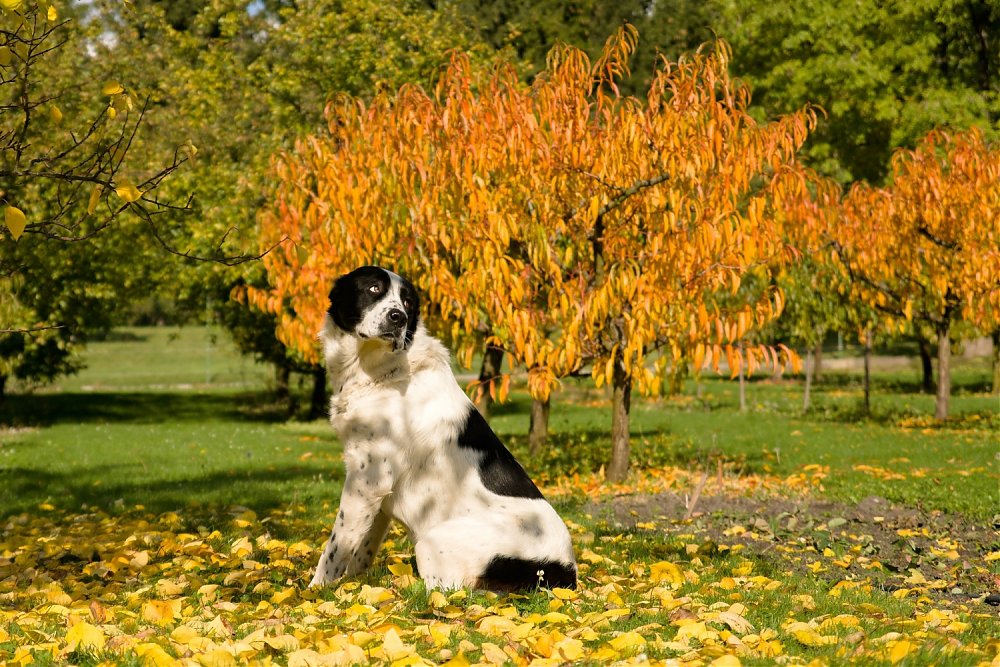
Autumn - ideal time for planned interventions
The weather for us was endless hot weather finally somewhat stabilized and therefore the time is coming when we can catch up on postponed things.
The weather for us was endless hot weather finally somewhat stabilized and therefore the time is coming when we can catch up on postponed things. If we talk about caring for pets, now is the ideal time for preventive interventions, planned operations or brushing dogs and cats.
The animal for these procedures must be placed under general anesthesia. Anesthesia is a burden on the body and is therefore better if a pet is not additionally burdened heat. Wounds during the late summer and autumn also breathe easier, faster and heal the risk of diaper rash is significantly smaller.
Sterilization and castration
In young animals, the most frequently planned surgeries are castrations in dogs and cats, or sterilizations in females or cats. For females, it is advisable to plan sterilization with sufficient distance from heat. During the season, the female is hormonally active and there is a significant blood flow to the uterus, which slowly resolves about a month after the end of the season.
Removal of tartar
In older animals we most often need to remove tartar. It is produced in all animals, but in each individual. Therefore, some animals need for the first time ultrasound brushing teeth at a young age and others as seniors. After cleaning the teeth, however, the tartar begins to settle on the teeth again. Therefore, this procedure should be repeated regularly, but the interval is different for each animal. Especially in small breed dogs there is a faster settling of tartar. Is no exception, it is first necessary treatment at the age of three years, then it is necessary to remove tartar usually annually.
Skin formations
Another reason for the planned interventions are various formations, skin nipples, warts and the like. They can occur in all age groups of animals. As veterinarians recommend these services to remove, because according insight is not possible to determine the type of service and thus whether constitutes an risk for a pet. Clearly it is necessary to remove all services that the animal hurts, whether intentionally or unintentionally. For others, we can try to cytologic examination when using a needle we get a small sample of such a body and the cells are then examined microscopically. On the basis of the result it is possible to decide whether it is necessary to surgically remove the formation or not. However, this type of investigation cannot identify with certainty all types of services. Therefore, it is always more confident body surgically removed and subsequently be examined histologically when the results are reliable.
How does it all go?
Just before the procedure, the animal is completely clinically examined. It is especially important to hear the heart with a stethoscope, where we can detect a heart murmur.
The animal is first seated and then placed under anesthesia, injection or inhalation, depending on the type of procedure. Sedation includes painkillers. During anesthesia, the animal is constantly monitored.
Within 15-30 minutes after the procedure, the animal wakes up. You can pick it up at home for a short while, when it is able to walk. This day it is advisable to provide a dog or cat a quiet comfortable place to recover from anesthesia.
On the following day, the health and wounds are usually checked and the medication is given individually according to the type of procedure. The stitches are pulled out 14 days after the procedure. Until then, the pet requires increased care. The wounds must be taken care of and the dog must wear a collar unconditionally. For a dog to try stitches is a small moment of inattention.
Anesthesia in older animals
Many owners are afraid of anesthesia with their older pet. Certainly the risk of complications in older cats and dogs is higher than in healthy young animals, but by the procedures outlined in this article, we minimize it to the minimum.
If you plan to anesthetize a senior dog or cat, we recommend a blood test before surgery. It consists of two parts - hematology, which can detect anemia or covert inflammation and biochemistry, which is mainly focused on kidney and liver parameters. Thanks to biochemical examination we can assess the function of these organs, which is especially important before an animal is anesthetized. Liver and kidneys are in fact bodies break down and excreted sedatives and anesthetic drugs from the body critters. In addition, biochemical testing should be repeated as a precaution in older animals about once a year. We can only capture a reduction in renal or hepatic impairment occurs before the failure and supportive care significantly extend the life of the dog or cats.
In conclusion
From the perspective of the weather in late summer or autumn is an ideal time for planned interventions. However, the most important thing is that the term suits you. Even without any complications, the animal will have higher demands after surgery. Postoperative care means not only wound care, but also your attention to whether the animal and healing procedure is OK and your supervision to rest and save the animal.
